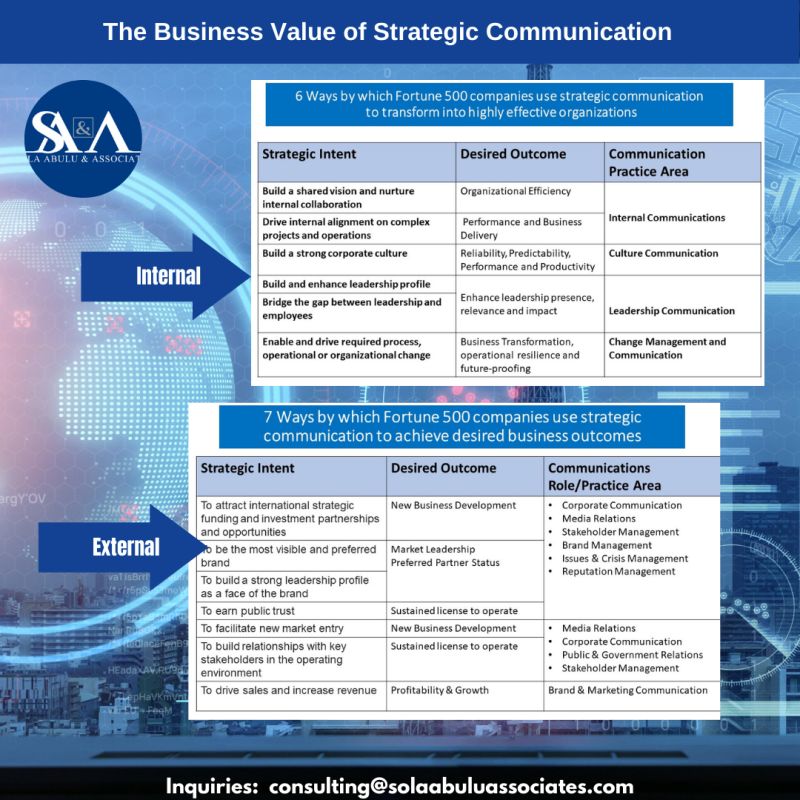What is the importance of audience-centric communications?

For a communications effort to be described as strategic, it must be purposeful and achieve the exact meaning the speaker or writer intended for it to accomplish to the audience. If the audience derives a different meaning from what was intended, then such effort cannot be described as intentional and purposeful communication. This is what makes audience-centric communications important.
Audience-centric communications is a strategic communications approach that regards the audience as core and the communications strategy is tailored to the interests and concerns of the identified audience segments based on the business or organizational imperative.
A few questions to ask yourself to determine if you are a responsive communicator:
Is communications a key aspect of your business, political or organizational strategy?
Does your business or organization have a process for obtaining feedback from internal or external stakeholder groups on a regular basis?
Have you sought for feedback from subordinates, stakeholders or customers in the past 6 months or one year?
Have you incorporated any received feedback into your communications, engagement or operational actions?
~Sola Abulu.
The above responsive communication determinants is an excerpt from “Communication Without Listening is Self-talk” by Sola Abulu, our principal consultant. Read the full article to learn the importance of listening here.
Examples of Audience-centric Communications
· Internal Communications:
This typically refers to communication within an organization with employees and other internal stakeholders. Internal communications can be audience-centric when the business considers the needs of its employees in decision and policy making. Communication within an organization should be transparent and timely, demonstrating an understanding of the relevance of those who make up the internal stakeholders in the growth of the organization. When internal communications is not audience-centric, it often leads to decreased employee motivation, decreased productivity and consequently decreased customer satisfaction, especially in instances where the organization is sales-oriented.
· Public-Sector Policy Communication:
Sola Abulu defines public policy communications as “The process of proactive and purposeful communication and engagement with the public from the early stages of policy development to the launch-roll-out and to final stages of implementation and ongoing management.” Read the full article here.
From this definition, we can describe a strategic public policy communication when the audience (the public) is well informed on all stages of the policy development and their feedback or concerns are well taken into consideration. An example of a good audience-centric public policy communication can be seen in the government’s decision to enforce a fully on-site or remote mode of work. The decision has to consider what will affect its civil servant’s productivity based on the nation’s harsh economic realities. A good example of public policy communication is the decision by Lagos state government to extend their work-from-home policy over fuel price hike in Nigeria. On the other hand, an example of poor public policy communication is seen in the protest that ensued in Kenya due to the public’s discontent in the finance bill. The outrage in many African countries by the public which led to protests in 2024 explains the importance of audience-centric public policy communications.
· Political Communications
This is defined by Sola Abulu as “The process by which political leaders, officials and opinion leaders communicate and engage with citizens and stakeholders for a defined purpose, campaign, or agenda.” An example of political communications is a political debate and manifesto declaration.
In governance, audience-centric communication can be viewed as citizen-centric communication which Abulu describes as “a governance approach that prioritizes citizen’s needs, interests and well-being at the core of public administration.” This implies that citizens should see their concerns and expectations being relatively met through political debates and manifestos. This article by Business and Financial Times is a call to citizen-centric communications in Ghana further emphasizing its importance.
· External Communications
External communications involves any communications effort that is targeted at customers, key stakeholders, investors and citizens as a whole often for visibility, to earn public trust and build relationships that affects the business or organizational financial bottom line. You will find this article on The Business Value of Strategic Communications important as it explores how Fortune 500 companies leverage strategic communications both internally and externally.
Audience-centric communications in external communications will pay keen attention to consumer feedback and general sentiments around a business and organization. This is made easy by analyzing comments on social media and by using social listening tools.
Do you have a strategic communications gap? Are you struggling to achieve meaning through your organizational communications? Then our upcoming CPDSO-Accredited Strategic Communications Course is curated for you. Sign up here.
……………………………………………………………..
Sola Abulu & Associates is a strategy and communications consulting and training firm committed to enabling businesses, brands and organizations to achieve their objectives through strategic communications, organizational effectiveness and reputation risk management
Chat with us for more information on our courses
